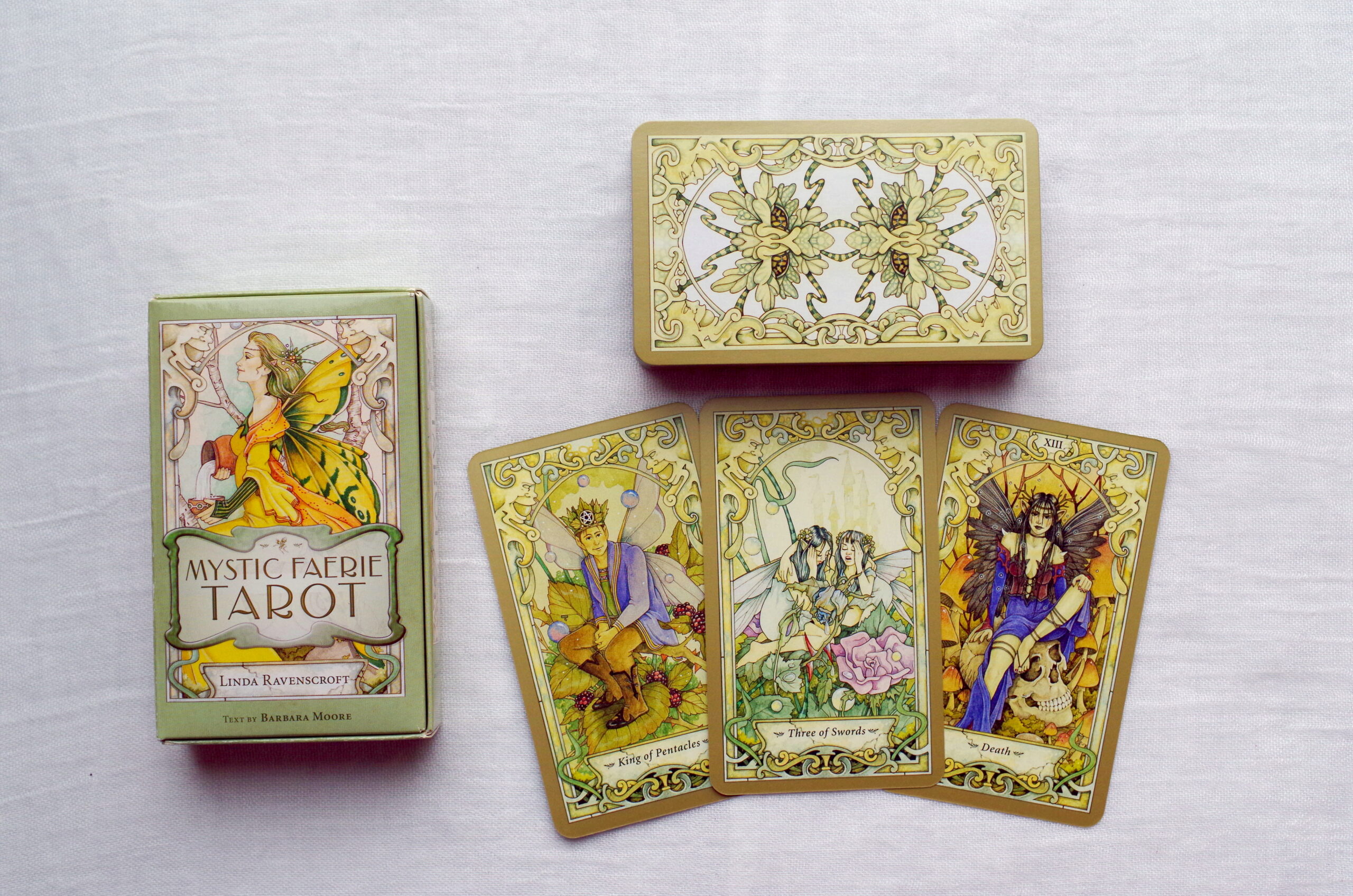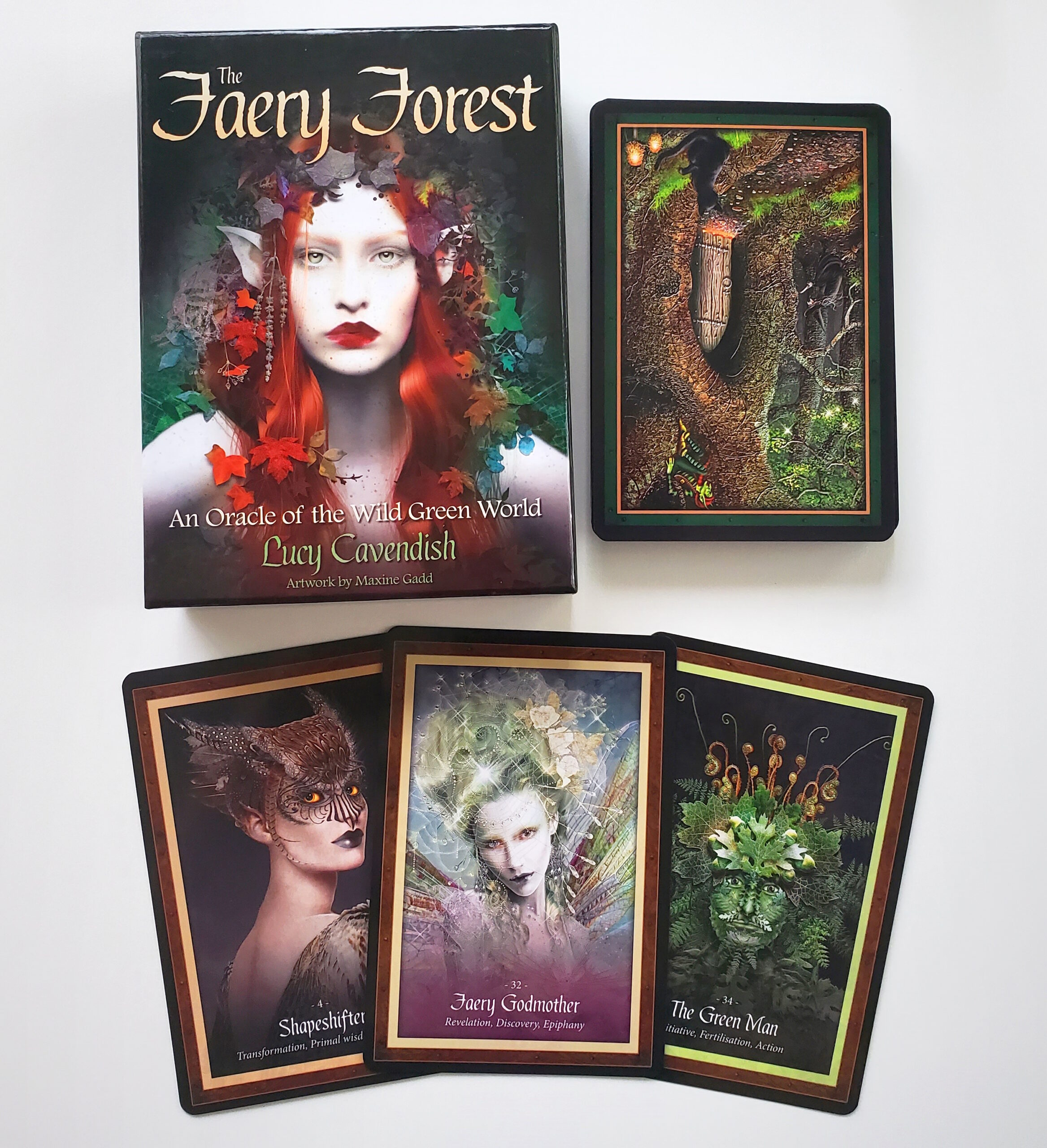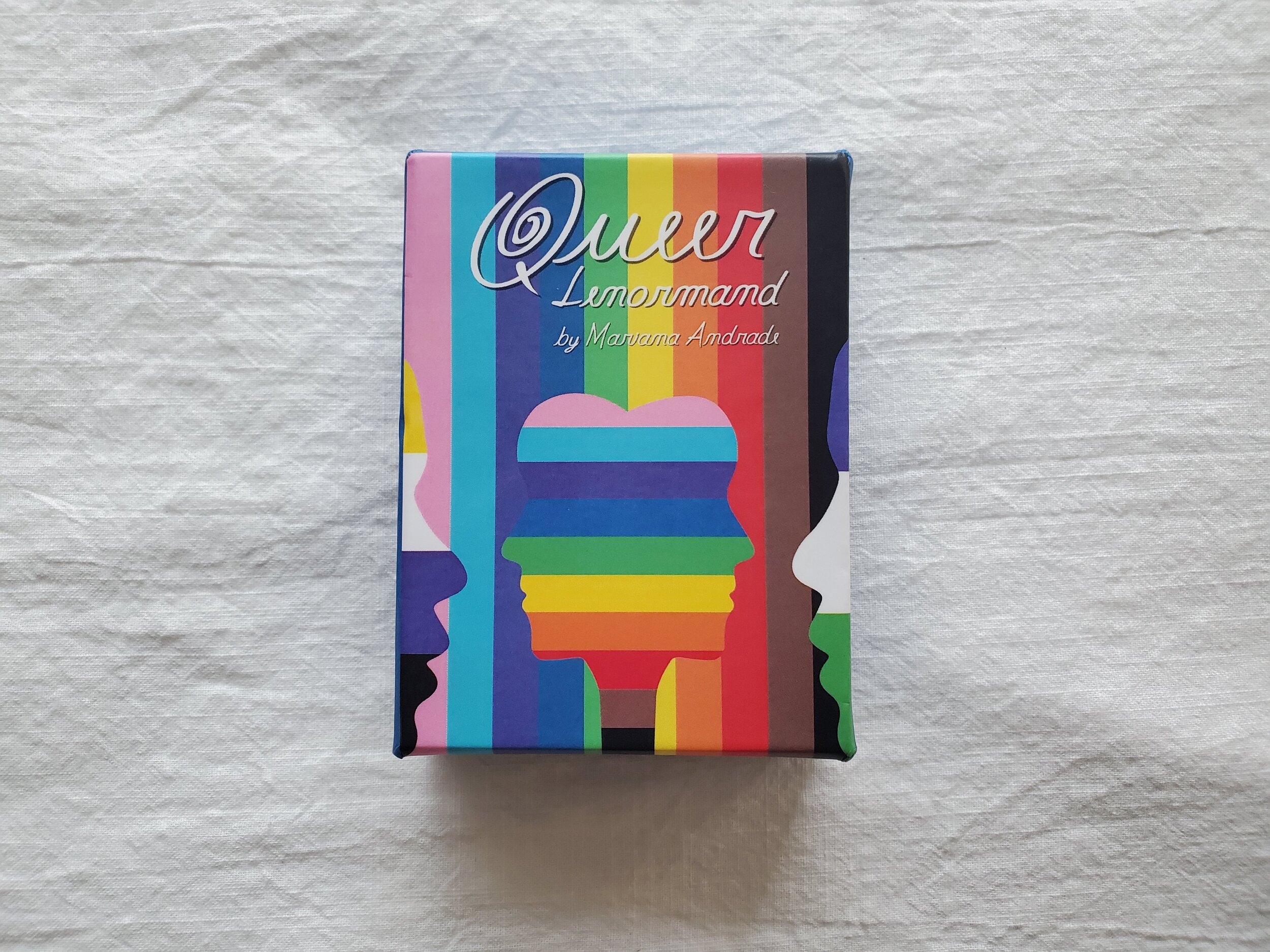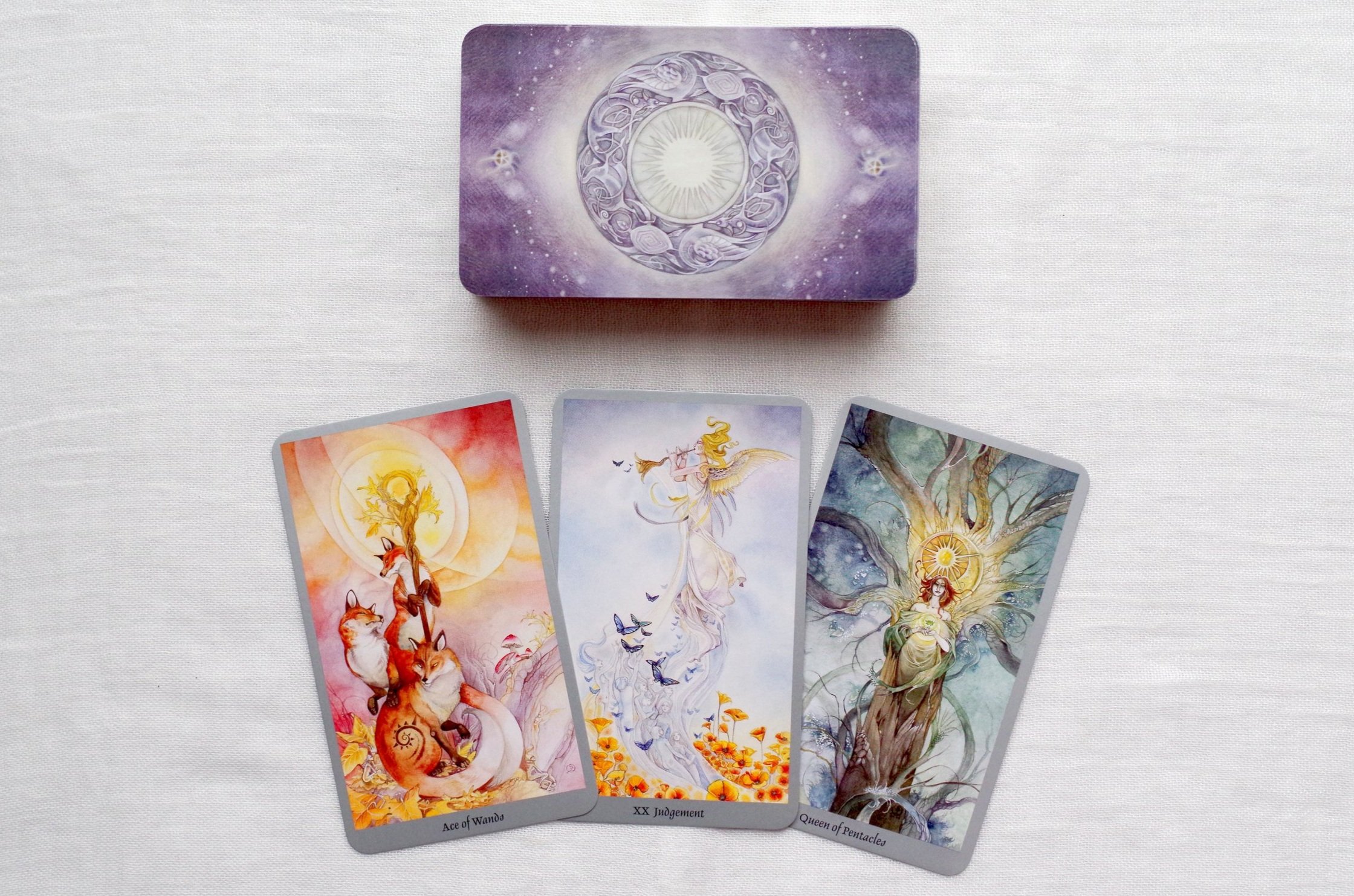Deck: Mystic Faerie Tarot
Publisher: Llewellyn
Writer: Barbara Moore
Artist: Linda Ravenscroft
Overall Rating: 6.5/10

Cardstock: It's Llewellyn's standard card stock, which is to say it's a little on the thin side compared to some other decks, but shuffles well. The borders are semi-metallic, probably meant to be gold, but they come off a little more olive green. Some people may prefer to remove the borders, as they are pretty thick.
Artwork: The artwork is watercolor, with each suit having a theme and a specific color pop against the mostly green/yellow backgrounds: red mushrooms and leaves for wands, blue merfolk and waterlilies for cups, roses and pink for swords, and berries and oak leaves along with deep purple for pentacles. Generally the artwork is emotive, illustrating the meanings of the cards, which follow the Rider-Waite-Smith tradition.
Book: The booklet has a decent-sized paragraph of meanings for each card, both Majors and Minors, though it doesn't address reversals at all. At the back, there is a little bit of information on reading the cards, and a handful of example spreads, some of which are very simple (one card, three cards) and some that seem to have been developed specifically for this deck. Honestly pretty good for a LWB, though.
Likes: Unlike some other decks with simple illustrations of people, the facial expressions in this deck are pretty easy to read, and they tend to evoke what I would expect, in alignment with the card meanings.
Dislikes: I am not a huge fan of the color palette, overall, but that's extremely subjective I realize!
Overall Recommendation
If you like art nouveau illustrations, or fairy aesthetic (of the small winged variety), you'll probably like this artwork. I'm sort of neutral on it, personally. But this is a pretty solid deck choice for readers who use memorized traditional meanings, as well as intuitive readers working off the artwork itself. There's enough detail to be evocative, but not so much that it feels cluttered. I think this would also make a pretty decent beginner's deck. I went back and forth between 6 and 7, but decided just to settle on 6.5, because it's not a bad deck by any means, but it doesn't really stand out much, either.

















